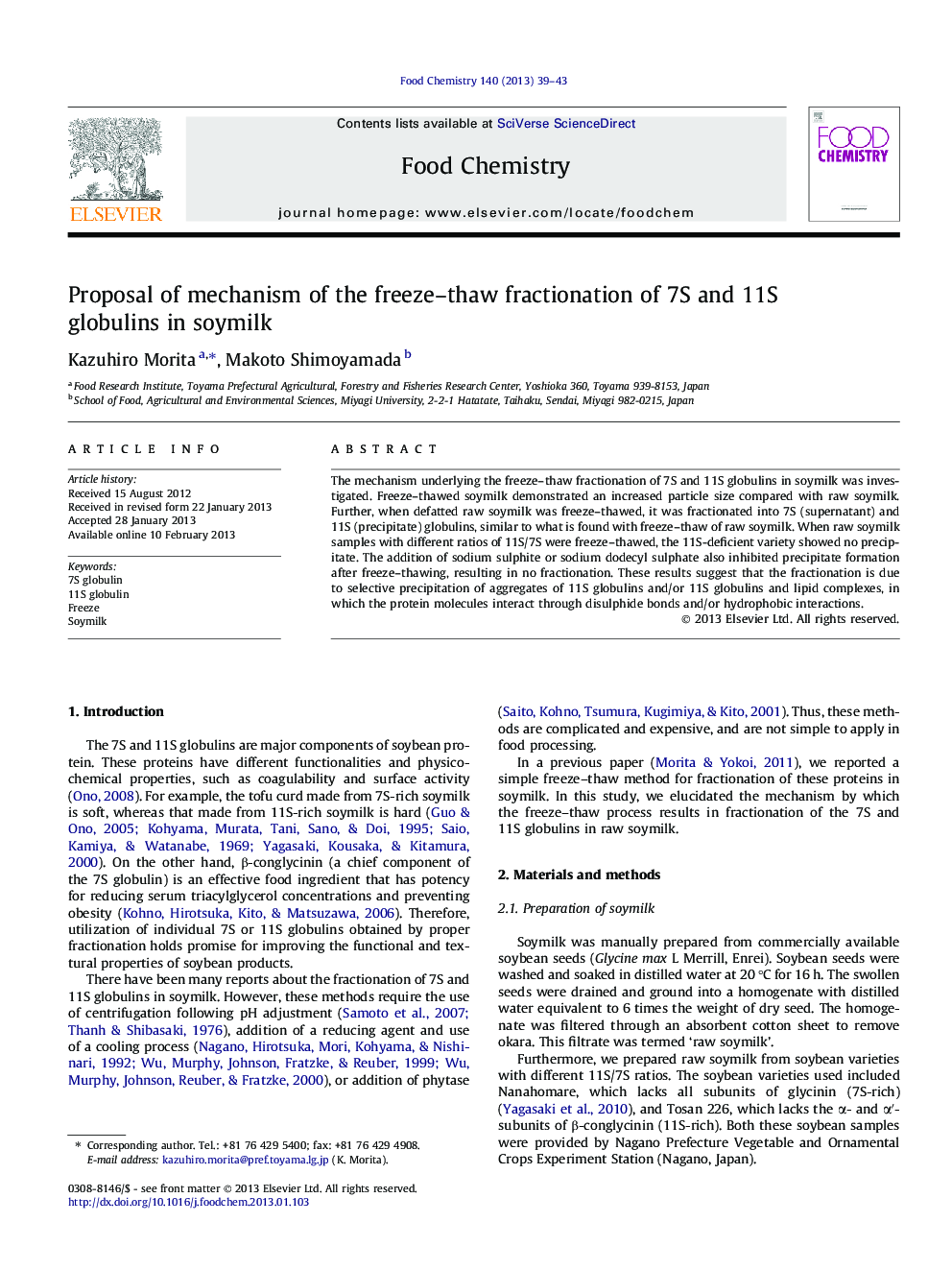| Article ID | Journal | Published Year | Pages | File Type |
|---|---|---|---|---|
| 1184885 | Food Chemistry | 2013 | 5 Pages |
The mechanism underlying the freeze–thaw fractionation of 7S and 11S globulins in soymilk was investigated. Freeze–thawed soymilk demonstrated an increased particle size compared with raw soymilk. Further, when defatted raw soymilk was freeze–thawed, it was fractionated into 7S (supernatant) and 11S (precipitate) globulins, similar to what is found with freeze–thaw of raw soymilk. When raw soymilk samples with different ratios of 11S/7S were freeze–thawed, the 11S-deficient variety showed no precipitate. The addition of sodium sulphite or sodium dodecyl sulphate also inhibited precipitate formation after freeze–thawing, resulting in no fractionation. These results suggest that the fractionation is due to selective precipitation of aggregates of 11S globulins and/or 11S globulins and lipid complexes, in which the protein molecules interact through disulphide bonds and/or hydrophobic interactions.
► Raw soymilk was fractionated into 7S and 11S globulins by freeze–thaw treatment. ► Freeze–thawed soymilk showed increased particle size compared with raw soymilk. ► Fractionation was only possible if the 11S/7S ratio in soymilk exceeded 0.53. ► The addition of sodium sulphite or SDS inhibited the fractionation. ► Fractionation results from interactions among freeze-concentrated 11S proteins.
